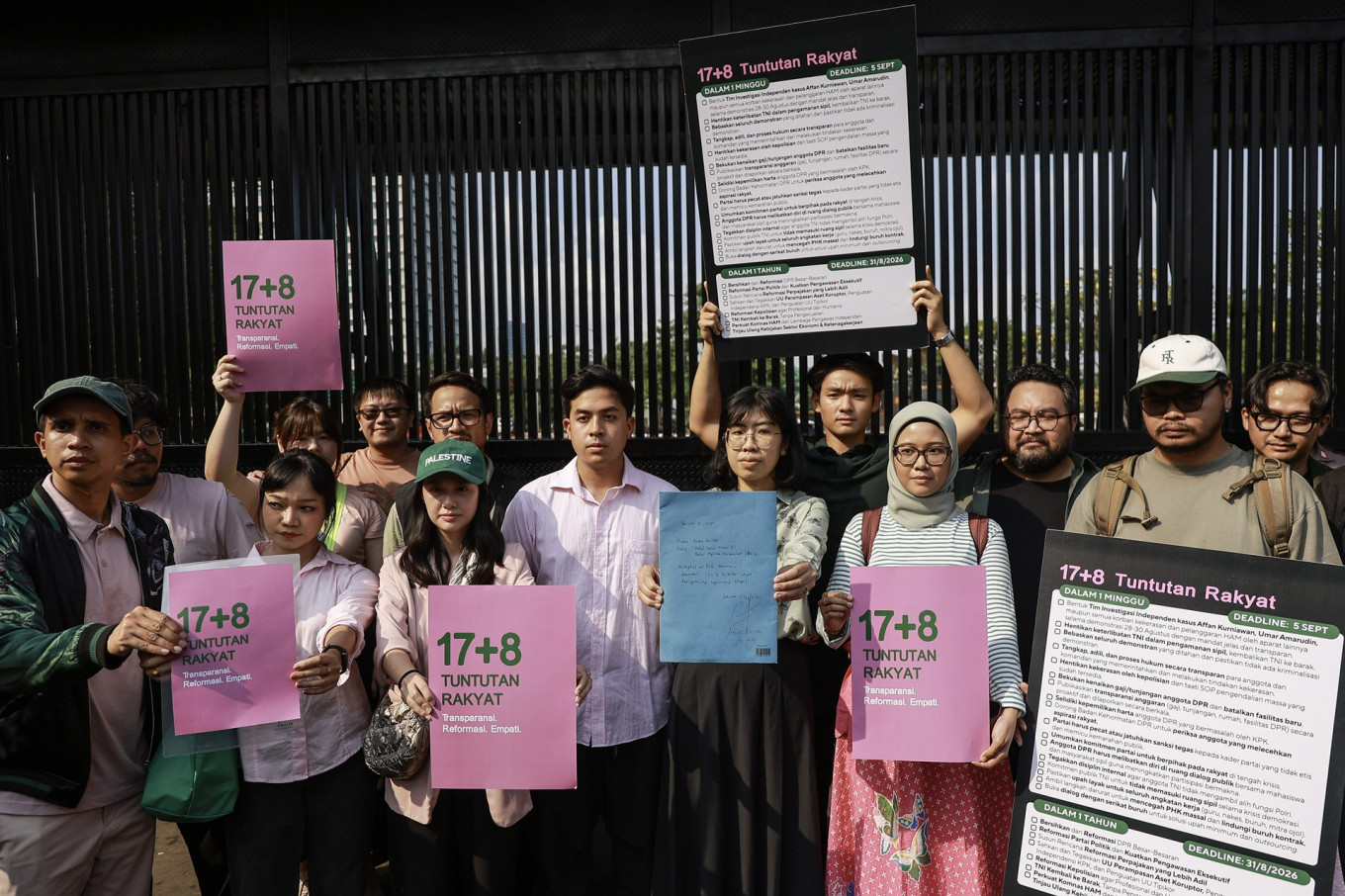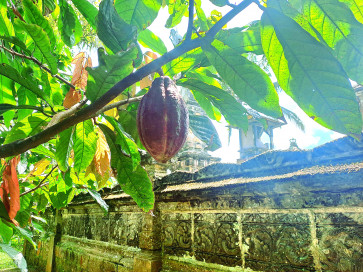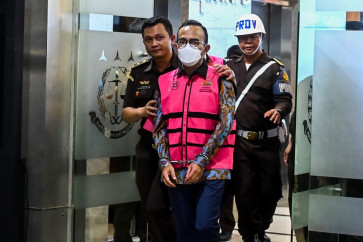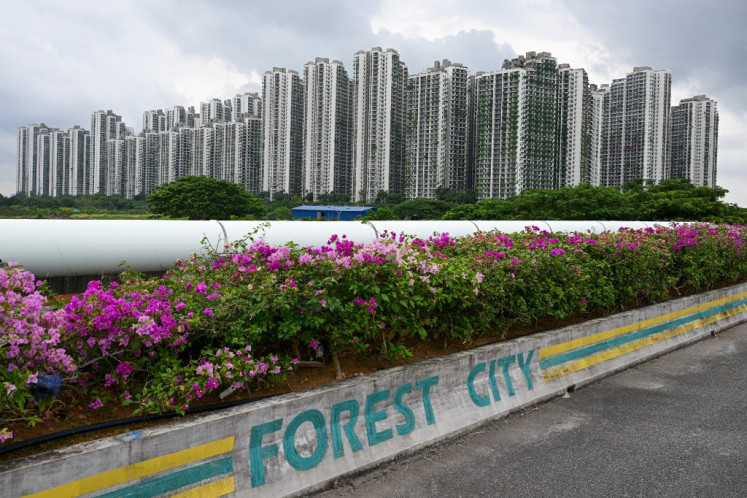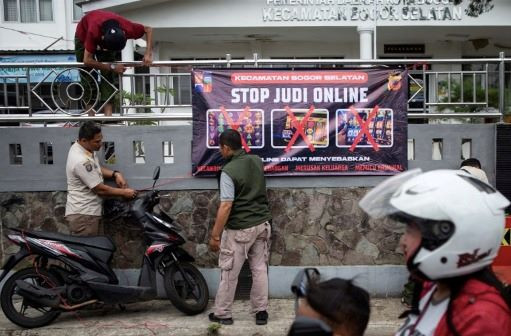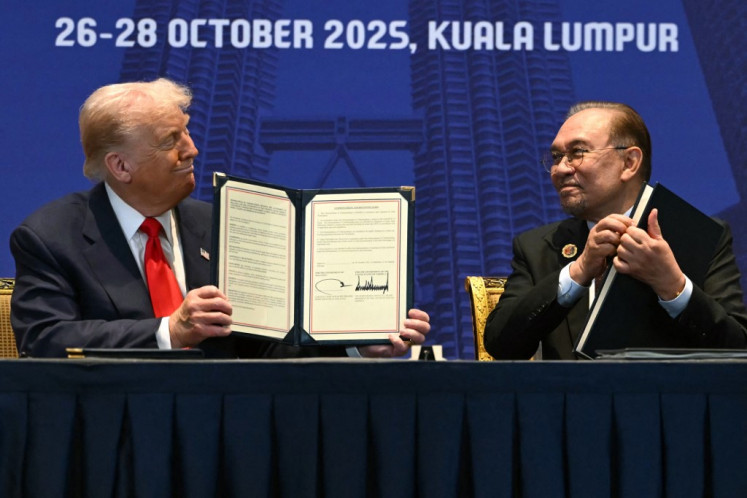Popular Reads
Top Results
Can't find what you're looking for?
View all search resultsPopular Reads
Top Results
Can't find what you're looking for?
View all search resultsBrooms in pink and green: Sweeping for justice on Indonesia’s streets
The wave of demonstrations that began over legislators' pay and perks expanded during its second week into a collective civil movement, bringing together women, workers, students and LGBTIQ+ to fight on the front lines for their right to engage in political life for a democracy in which they are seen, heard and accepted.
Change text size
Gift Premium Articles
to Anyone
O
n Sept. 3, the gates of the Senayan legislative complex became the backdrop for a wave of defiance in pink. Women in coordinated dresses carried sapu lidi (traditional brooms) while banners from LGBTIQ+ rights groups fluttered in the late afternoon heat.
The protesters called for the government to address the climate of insecurity and state violence that has marked recent demonstrations as well as to end practices that shield law enforcement from accountability. For many participants, these demands were intertwined with the need to dismantle systemic injustices that disproportionately affect women and marginalized communities.
The chanting that rose were more than echoes of economic frustration; they carried the accumulated weight of years of distrust toward those in uniform. As the crowd swelled outside the House of Representatives, the chanting merged into a single demand: that the state stop treating dissent as a crime.
The wave of demonstrations, of which the second week has just ended, began as outrage over lawmakers’ pay rise and perks but quickly crystallized into the "17+8 Tuntutan Rakyat" (people's demands). This platform blends short-term relief, such as the release of political detainees and a halt to violent crackdowns, with long-term reforms on police accountability, leadership overhauls and the demilitarization of public order.
As of Aug. 25, Amnesty International has confirmed at least eight protest-related deaths and documented cases of police firing tear gas into dense crowds, beating demonstrators and detaining students in unmarked vehicles. The images have revived bitter memories of the 2019 student protests and the Kanjuruhan Stadium disaster in 2022, when excessive force led to the deaths of over 120 people.
For many women, these protests are not just about corruption or economic inequality; they are about reclaiming the right to exist in public spaces without fear of targeted harassment.
Reports by the Commission for Missing Persons and Victims of Violence (Kontras) have documented how women protesters face verbal abuse, body shaming and threats of sexual violence from security forces, alongside broader patterns of gender-based brutality. In its submission to the United Nations Universal Periodic Review, Kontras detailed cases in Papua where women and girls, some as young as 9, were subjected to torture, rape and sexual violence in police custody, including during the aftermath of the 2006 Abepura incident.
Your Opinion Matters
Share your experiences, suggestions, and any issues you've encountered on The Jakarta Post. We're here to listen.
Thank you
Thank you for sharing your thoughts. We appreciate your feedback.

